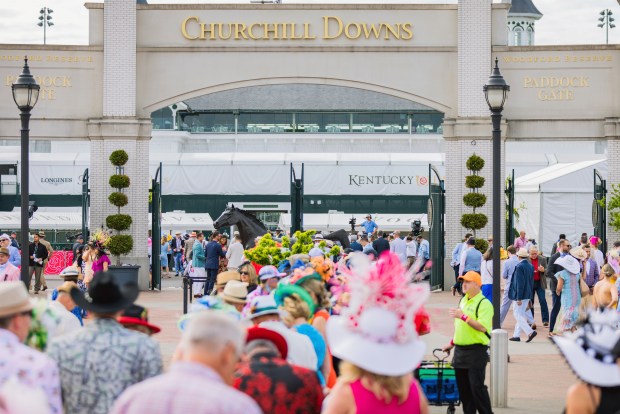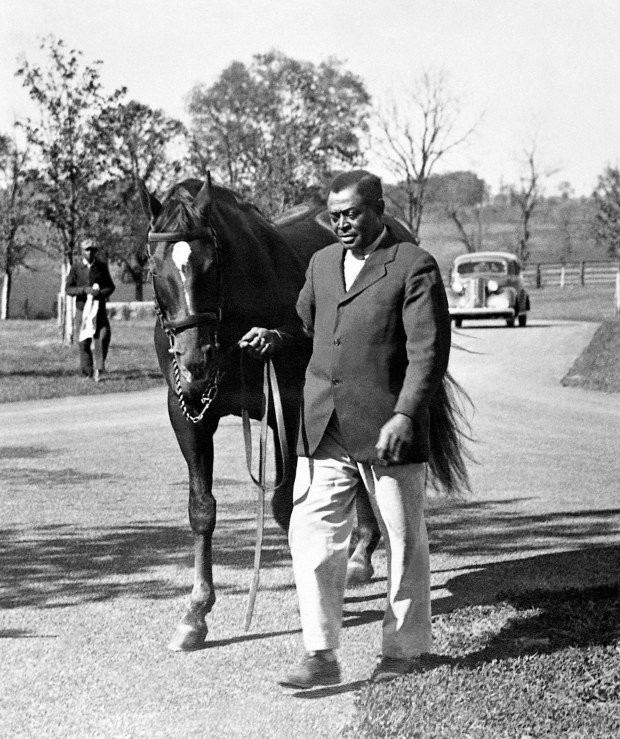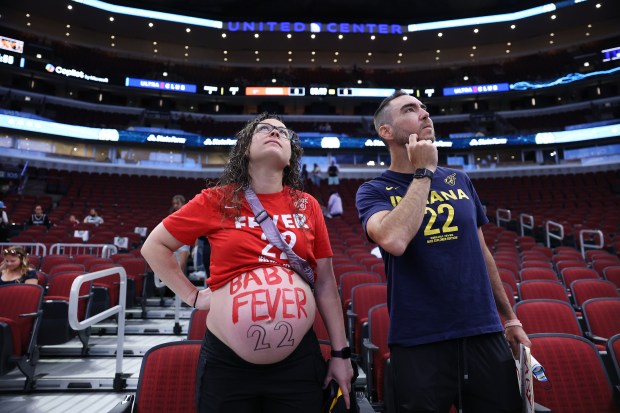Ten thousand cheering horse racing fans at Kentucky’s Louisville Jockey Club, now called Churchill Downs, marveled as African American jockey Oliver Lewis brought his chestnut colt Aristides neck-and-neck with Volcano on the homestretch, and the pair surged ahead of the pack of lightning-fast thoroughbreds racing on May 17, 1875. They thundered in tandem at such breakneck speed it seemed as if they could take flight, and in the last few seconds Aristides broke away and bolted to victory in the inaugural Kentucky Derby.
That was the first of many history-making moments that have transpired in the past 150 years at this venerated racetrack, home to what is called “the most exciting two minutes in sports.”
The derby’s sesquicentennial celebrates the oldest continuously held sporting event in the United States. And whether you attend the race or plan your visit when the ponies aren’t running, a Louisville getaway will inspire reverence for the Bluegrass State’s thoroughbred racing industry and the generations of equestrians, especially the overlooked African American participants, who shaped its most famous event.
You can kick things off with the 69th annual Kentucky Derby Festival, held during the two weeks preceding the May 4 race. It features more than 70 events around Louisville, including the Thunder Over Louisville fireworks display.
The derby itself is more than just the country’s most prestigious horse race. You’ll see its magic emanate from the pageantry that plays out in the shadow of the track’s regal twin spires. The enduring legacy of the derby includes everything from the fashionable crowd singing “My Old Kentucky Home” to the red-coated bugler playing “Call to the Post” to the winning horse being blanketed with red roses.
The Churchill Downs venue, a National Historic Landmark, has many long-standing traditions, but it’s not frozen in time. The biggest change in decades will be unveiled at this year’s Run for the Roses: a $200 million redesign to the saddling paddock, where the feisty 3-year-old thoroughbreds are held before the race, that has been underway for more than a year. It’s like a locker room for horses because this is where the equestrian athletes get their game face on before the biggest race of their career. Now, it will be one of the first things fans see when they pass through the gate.
This area of the track will more than double in size, expanding from 5,000 to 12,000 square feet. The stalls will be moved beneath the twin spires for what will likely become an iconic view.
Guided tours of Churchill Downs showcase the new paddock and more. A 90-minute Superstars and Spires Tour provides a peek at areas of the racetrack that are inaccessible to most visitors. Millionaires Row, a prime vantage point overlooking the finish line, is where celebs and dignitaries in extravagant hats sip mint juleps. It’s where Queen Elizabeth II, a lifelong equestrian, watched the race when she attended the derby in 2007.

On the second floor of the clubhouse are the eye-catching Peb murals, named for Pierre Peb Bellocq, the cartoonist who created them.
A 36-foot mural features humorous caricatures of every derby-winning jockey from 1875 to 2004, including the late Bill Shoemaker, a 4-foot-11-inch force of nature who won the derby four times and is widely regarded as one of the greatest jockeys of the 20th century. The weight limit for Kentucky Derby jockeys is 126 pounds, and that includes the saddle. Shoemaker weighed in at only 98 pounds.
After the tour, you can check out the adjacent Kentucky Derby Museum; admission is included with the Churchill Downs ticket. The museum’s “Black Heritage in Racing” exhibit documents the legacy of Kentucky’s Black equestrians who dominated the sport in the latter half of the 19th century. When Lewis won the first Kentucky Derby, he was one of 12 Black jockeys on the 15-strong field. In the race’s first 28 runnings, African Americans won 15 times.

The rise of Jim Crow laws that enforced racial segregation in the Post-Reconstruction South forced them off the track, and for decades, their contributions to the sport were forgotten.
There are few Black equestrians remaining in the American horse racing industry today, but Greg Harbut is a noteworthy one. The owner of Harbut Bloodstock racehorse management company in nearby Lexington is a leader in the equine business.
Harbut is tremendously proud of an exhibit at the museum that tells the story of three generations of his family’s horsemen: Greg; his grandfather Tom, who was denied entry to the 1962 derby despite being co-owner of a horse in the race; and his great-grandfather Will, groom to Man o’ War, one of the greatest racehorses of all time.
“The Kentucky Derby started with the direct contributions of African American horsemen,” said Greg Harbut, who appears in interviews that can be viewed on interactive screens.

Artifacts include the purse that held celebrity jockey Isaac Burns Murphy’s 1891 derby winnings. Murphy, the son of a former slave, was the first jockey to win the derby three times.
Next, head upstairs to peruse the museum’s newest permanent exhibit that highlights one of the greatest moments in racing history. “Secretariat: America’s Horse” chronicles the racing career of the powerful colt nicknamed “Big Red” because of the color of his coat.
On May 5, 1973, the legendary thoroughbred became the first to run the 1.25-mile race in under two minutes, the first victory in his Triple Crown sweep.
The Triple Crown is a series of horse races that includes the Kentucky Derby, the Preakness Stakes and the Belmont Stakes, in that order, and is the ultimate prize in horse racing.
Each of the Triple Crown races Secretariat won are shown on a 10-foot screen, allowing fans to time travel back more than 50 years to cheer on the fastest racehorse in history. At the Belmont Stakes in New York, Secretariat won by a phenomenal 31 lengths, the pinnacle of his record-breaking career. Watching his videos is thrilling even though you know the outcome, making a visit to the museum a sure bet.
If you go
The Kentucky Derby: Admission to the infield starts at $115. Reserved seats, sold as a two-day package for the Derby and Kentucky Oaks, start at $650. kentuckyderby.com
Churchill Downs: Superstars and Spires Tour starts at $20. 700 Central Ave., Louisville, 502-637-1111, churchilldowns.com
Kentucky Derby Museum: 704 Central Ave., Louisville, 502-637-1111, derbymuseum.org
The Kentucky Derby Festival: Ticket prices vary by event. kdf.org
Tracey Teo is a freelancer.





